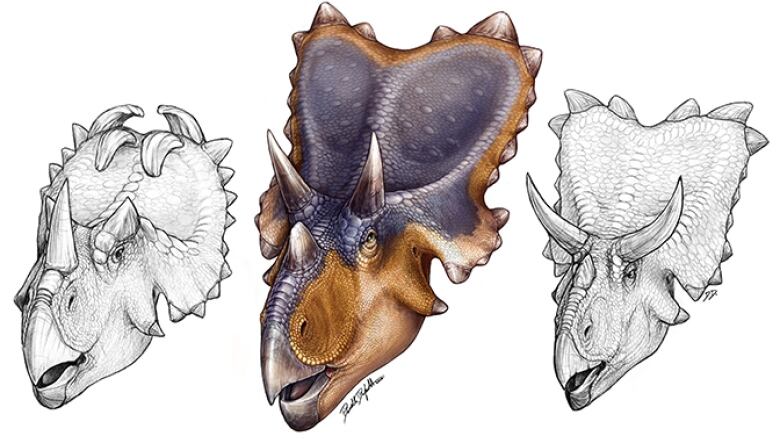Mercuriceratops gemini dinosaur had wing-like headgear
'Twin' specimens of dinosaur found in Alberta and Montana

A newly discovered horned dinosaur may once have wooed potential mates with a unique, wing-like frill on its head.
Mercuriceratopsgemini was a plant-eating dinosaur about the size of an African elephant that lived in Alberta and Montana about 77 million years ago, during the Late Cretaceous. It was related to other horned dinosaurs like Triceratops, but had headgear "unlike anything we have seen before," said David Evans, curator of vertebrate paleontology at the Royal Ontario Museum, in a news release announcing the discovery.

"Just like the Greek god Mercury, who has a winged helmet, our horned dinosaur has a winged shield on the back of its skull," said Michael Ryan, curator of vertebrate paleontology at the Cleveland Museum of Natural History, in a video posted by the museum.
Ryan was the lead author and Evans a co-author of a new paper describing the dinosaur, published online in the journal Naturwissenschaften.
The resemblance to Mercury's winged helmet was where the dinosaur got the first part of its scientific name.
The second part of its name, gemini the Latin word for "twins" refers to the fact that the dinosaur was discovered from two very similar specimens that died about 400 kilometres apart.
- One was collected in the Judith River Formation in Montana and later acquired by the Royal Ontario Museum in Toronto.
- The other was collected in the Dinosaur Park Formation of Dinosaur Provincial Park in Alberta by Susan Owen-Kagen, who works in the lab of paleontologist Philip Currie at the University of Alberta.
During a visit to Alberta, Owen-Kagen showed Ryan a fossil of the winged head frill she had collected, and he immediately recognized it as being from the same kind of dinosaur as a very similar fossil he had previously seen at the Royal Ontario Museum it was even from the same side of the dinosaur's head.
The researchers think that the frills were used by the dinosaurs to identify each other and attract mates.













_(720p).jpg)


 OFFICIAL HD MUSIC VIDEO.jpg)
.jpg)



























































































